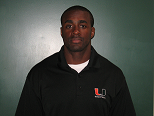
Ray Eady
What is the latest book you read and why?
At the University of Wisconsin, the women's basketball staff has bible study sessions at least once a week throughout the year (even during the summer months). Our goal as a staff is to coach in God's name and honor. Right now (as a staff), we are reading a book entitled, "The Quest" Coaching for Jesus in a Bottom line World. Personally, I look at my career as a blessing (and obligation) from God to mentor and inspire young people. For me, basketball is simply the platform for doing God's work. As coaches, we have an obligation and a duty to educate, nurture, and develop our athletes beyond the athletic arena. I work mostly with female athletes, so I use my platform to help empower women mentally and physically. Coaches have the ability (and the center stage) to positively influence many people.
Early in my career, it was all about winning games and my coaching reflected this desire. Winning was my way of advancing my career; an opportunity to make more money or to work at a bigger collegiate program. Losing was not an option and in my opinion that was very selfish. Now I coach for God and I follow his coaching blueprint which is too prepare young people for success and life's challenges. I am still a competitive individual but winning has taken on a new meaning. Winning is having a positive impact on players that will last a life time.
I think Tony Dungy said it best, " We do play on Sundays, but if we play the right way, carry ourselves the right way and honor God with our lives, we can impact people for Christ that would never hear about Him in a normal "church service."
For interns, volunteer coaches, graduate assistant etc. aspiring to be basketball strength coaches, what advice would you give?
My advice to aspiring basketball strength and conditioning coaches is to get on the training floor and learn how to be a GOOD strength and conditioning coach. Basically, this means learning how to instruct a variety of athletes regardless of sport. Developing contacts, collecting business cards, and networking is important but at the end of the day, you got to know how to coach. It's critical that aspiring strength coaches learn how to interact and communicate to a diverse group of athletes particularly in a team setting. This includes females, African-Americans, Hispanic-Americans, rural-area athletes, inner-city area athletes, athletes with a strong religious faith, athletes from single family homes, and the list goes on.). Athletics is the "melting pot" of the world. Some athletes are motivated differently given their background. All athletes aren't built the same! As a strength coach, you got to find the best way to get the most productivity out of your players. You are not going to get this type of training in a classroom or at a symposium or conference. This type of training comes from being in the weight room, at practices, at games, at film sessions, etc.
Lastly, in my humble opinion, the most successful strength coaches are also great communicators not only to athletes but to sport coaches, athletic trainers, physical therapists, doctors, equipment managers, nutritionists, etc. In many cases, you got to be able to articulate and sell your training philosophy (and in some cases defend your philosophy). Art Horne wrote a great blog on this topic called "Who's fault is it". Developing positive and productive relationships with people in the athletic department is extremely important.
What is your training philosophy regarding in-season training? Off-season training? Pre-season training?
My goal for the off-season is to prepare our team for the upcoming competitive season by developing the physical qualities need to perform at a healthy and optimal level. Of course, this includes improving strength, power, sport-specific speed, quickness and conditioning. At the end of every competitive season, I will develop a yearly training plan based on a couple of factors (a few many include):
1. The number of returning players. Will we be a veteran or a rebuilding team?
2. What type of playing style will we execute offensively and defensively?
3. Are we a team that needs toughness? More team unity?
4. Are we skilled at all five positions? How many players do we have at each position?
5. How will certain players be utilized offensively and defensively?
6. Do some players need additional work (i.e. weight loss, weight gain, speed, etc.)?
Once these factors are identified, I can develop and implement a plan to meet our competitive needs.
I divide the training year into blocks (off-season I, off-season II, pre-season I, pre-season II, and in-season). Each block focusing on a specific physical quality. For example, off-season I is typically dedicated to teaching and re-educating the players on how to perform certain "technical" lifts as well as improving posture, balance, coordination, movement, core stability, and GPP (work capacity). These are the physical qualities that are going to be needed to successfully complete summer workouts.
Our main goal for off-season II is to improve sub-maximal and maximal strength which is extremely important. Strength is one of the catalysts for enhancing athleticism.
We will still train other qualities such as strength-speed, speed-strength, general conditioning, etc. but our number one priority is to get strong. This particular block is the best time to achieve this quality because of a couple of reasons:
1. On-court activity is usually reduced during the summer. Players can give more energy and mind share to weight room activities.
2. I don't believe you can continue to improve strength at an optimal rate during the pre- or competitive seasons because players are now being exposed to stressors that can negatively impact strength gains. (i.e. individual workouts with coaches, team practices, conditioning sessions, pick-up games, late night study sessions, early classes, etc.)
During pre-season I our goal is to prepare for the start of official practice. The physical qualities that are highly emphasized are basketball specific movement/endurance, power, and strength. Our training tends to be more specialized to the demands of the sport.
The goal for pre-season II is to prepare for the beginning portion of our non-conference game schedule. At this point in time, on-court activity has increased dramatically. Weight training frequency and volume will decrease but when we train the focus is to maintain strength gains achieved during the off-season and pre-season I. We tend to do more therapeutic work during these sessions to help facilitate the recovery process as well.
Finally, the goal for the in-season is to keep the players healthy and competitive. Like most strength coaches, I understand the importance of in-season strength training but I also understand that practice takes priority. You can't put too much physical and mental stress on your players that they are unable to perform efficiently on the court. Eventually, you will have overtrained players and not so happy coaches.
What are some of the biggest myths that still surround strength training and the basketball athlete?
Many basketball athletes still think the best way to improve their jumping ability (vertical jump) is to continue to do jumping drills outside of playing basketball. Whether it's on a vertimax, using bands, jump ropes or wearing shoes specially designed to increase jumping performance. As strength coaches, we call all agree that the vertical jump has a direct correlation to limit strength. If you want to jump higher, you must get stronger! This includes adding squats, deadlifts, rack pulls, posterior chain work, and single leg work into your workouts to develop the maximal strength needed to be explosive.
Need more proof? Studies from the National Strength and Conditioning Association have shown that the average vertical jump for a division I collegiate basketball is approximately 27" when compared to a division I collegiate defensive back (football) which is approximately 33". In my opinion, this is not a coincidence. I still believe the majority of basketball players and coaches are still light years behind their football counterparts when it comes to strength training (and conditioning). Many basketball players continue to specialize during the off-season while their football counterparts tend to concentrate the majority of their efforts on strength training. Yearly specialization by the basketball athlete will have a negative impact on developing the maximal strength needed to improve other physical attributes.
What assessments or evaluations do you use with your players during pre-season?
During the pre-season, the athletic trainer and I will assess and evaluate the players in a couple of areas. First, we will do a functional movement screen. I like doing the movement screens because it allows me to asses an array of total body movement mechanics. As you know, proper movement mechanics is needed to perform efficiently, effectively, and injury free on the basketball court. The screens we typically use are:
1. Overhead squat test
2. Hurdle test
3. Active hamstring test
4. In-line lunge test
In addition to the screens, we will do the hop and stop test and the leap and stop test to assess a player's ability to produce, absorb, and stop force on one leg.
We will also do some performance evaluations to measure leg power and strength. To measure power, we will do a series of vertical jump test.
1. Static jump test to measure starting strength
2. Countermovement jump test to measure speed-strength
3. 4-jump test to measure how efficient a player is using their power repeatedly
We perform these jumps on a just-jump mat while the athletes are holding a dowel on the back of their shoulders (as if they were going to do a back squat). The goal is to eliminate the action of the arms to really determine leg power. I like performing these tests because they can help you determine if certain players need more strength work or more speed/elastic work.
For conditioning, we will do the standard 300 yard shuttle test which is a great test to measure anaerobic capacity. This year, I will test the players in the 150 yard shuttle because the energy system demands are bit different (anaerobic power).
Lastly, we will do body composition assessments on a DXEA system to determine body fat and lean muscle tissue. I want our players to be at an optimal body weight for increase performance and to reduce the chances of injury.
I must say the most overrated test when evaluating basketball players has to be the bench press test. So many coaches put a premium on the results. I am not saying basketball players don't need upper body pushing strength but the relevance it has on basketball performance is minimal. When the bench press can prevent a female player from tearing their ACL then I will put more emphasis on the test.
Let's make it clear, performance evaluations will never truly tell you if a player will have some success on the court. It merely predicts future performance. All the strength and power in the world won't make you a successful athlete unless you're able to apply it in sport-specific contexts and integrate it with finer motor qualities.
I don't try to re-invent the wheel when it comes to testing. I want to make my evaluations meaningful for my athletes and to make it applicable for what they will most likely be doing on the court.
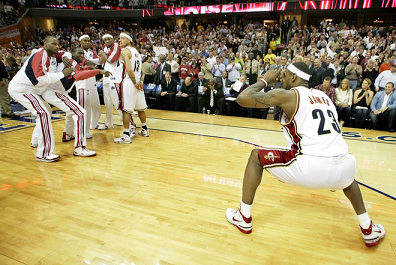
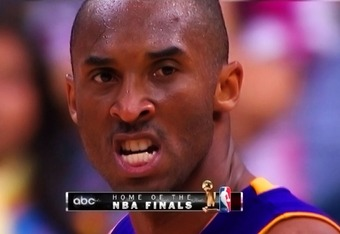


 Charlie Weingroff, formally of the Philadelphia 76ers
Charlie Weingroff, formally of the Philadelphia 76ers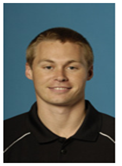 Keith D’Amelio, Stanford University, Formerly of the Toronto Raptors
Keith D’Amelio, Stanford University, Formerly of the Toronto Raptors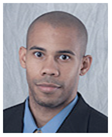 Mike Curtis, University of Virginia, formally of the Memphis Grizzilies
Mike Curtis, University of Virginia, formally of the Memphis Grizzilies